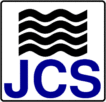Taskgroups
JCS is organized into taskgroups, each dealing with improving knowledge of specific aspects of seawater properties.
1) Salinity/Density Taskgroup

Salinity and density are the most basic properties of seawater, and these properties are now described at highest precision using the TEOS-10 standard. However, further research is still required. An ultimate aim of this taskgroup is to moved towards a salinity definition ‘traceable’ to the primary standards in the International System of Units (SI), and we are investigating using density as a primary measurement for this purpose (currently our salinity definitions are traceable only to a particular KCl solution via a certified reference material known as IAPSO Standard Seawater or SSW). Specific areas of interest are:
The current scientific consensus is that traceability to the SI of absolute conductivity at the level required is still not possible. However, more measurements of conductance at high temperatures, pressures, and salinities are recommended.
of SSW are being investigated.
Over the last few years different groups have been reporting contradictory results about whether Anton Paar densimeters (the typical instrument for routine density measurements at high precision) are measuring the density of SSW to be a) in accord with TEOS-10, or b) lower by 5-15 ppm than TEOS-10. Resolving this problem is critical, and there are two actions that can be taken:
- Develop a “best practices” guide that compares and contrasts the methodology of all groups performing these measurements
- Collate all available information about the chemical characteristics of SSW (batch-to-batch variations in density, density anomaly, conductivity, nutrient levels .
Keeping track of the composition of SSW will clearly be important into the future. Currently this is being carried out in an ad-hoc way; it is suggested that a more reliable procedure would involved suggesting to IAPSO at some point in the near future that this becomes a formal part of SSW manufacture.
2) pH Taskgroup

pH
The most important factor that controls chemistry in seawater (after salinity, temperature, and pressure) is its pH. However, defining and measuring pH to the accuracy we need in the ocean is difficult. the pH Taskgroup is involved with finding:
An end goal is a draft formal description of exactly how the measurement of pHT is performed and calibrated, to be used in discussions with BIPM-CCQM Working Group on Electrochemical Analysis and with the IUPAC Subcommittee on pH, and for help in preparing a well-founded uncertainty budget for the measurement of pHT in seawater media. This should also include a clear statement of its traceability chain.
Glass electrode measurements calibrated using low-ionic-strength buffers are typically used in water quality measurements, but spectrophotometric methods based on TRIS-buffers are used in the ocean which has high ionic strength. These two methods must be clearly linked.
Working with SCOR WG-145 on marine speciation (and its successor, the JCS Marine Speciation Taskgroup) to include carbonate and borate equilibria in their Pitzer model.
3) Marine Speciation Taskgroup

Chemical speciation is the distribution of the elements between different chemical forms, which plays a major role in the geographical distribution, geochemical activity, and bioavailability of the elements. This taskgroup is charged with:
This taskgroup is charged with maintaining and developing the speciation modelling software MarChemSpec, which was initiated in SCOR Working Group 145.
Current development plans for the MarChemSpec software include the incorporation of new thermodynamic measurements, inclusion of natural organic matter, and applications in trace metal cycling.
MarChemSpec may also be specialized to contribute to the aims of the taskgroup on pH.
4) Relative Humidity Taskgroup

To link fluxes of water and heat between the atmosphere and ocean, we need to understand how water behaves in air. This taskgrou is concerned with:
The current state of mutual understanding of the scientific, metrological, and user-specific aspects of “relative humidity” does not allow for an “agreed” position on a generalised RH definition. Different definitions each have their own advantages and disadvantages, which are often relevant to particular sectors of the community. The taskgroup should work towards communicating the issues more widely.
There is a general need for a common language to effectively communicate the theoretical thermodynamic background of RH metrics through and within a broader community of hygrometrologists and metrologists.
